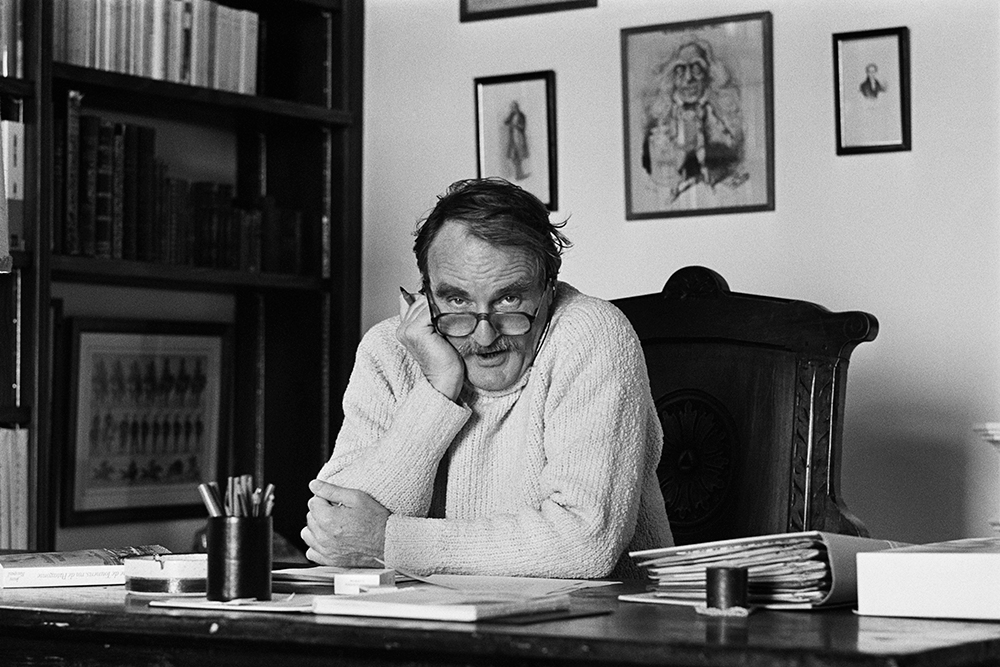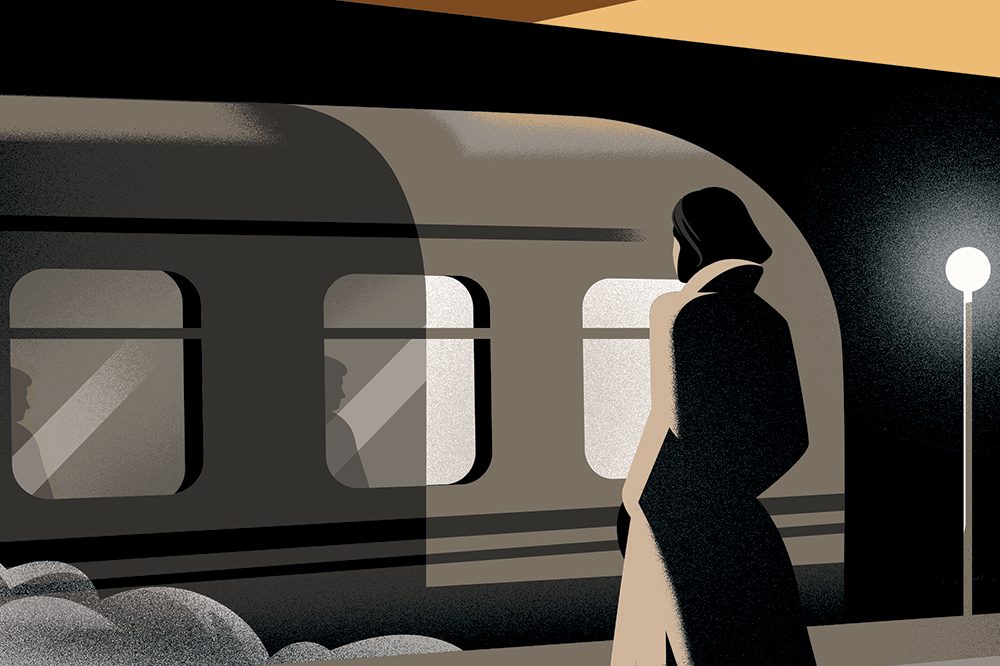Atop the Almaden Tower in downtown San Jose — the world headquarters of Adobe Systems Inc. — sits a singular art installation. Four amber wheels rotate every few seconds in a seemingly innocuous and frankly nonsensical digital display. The installation, known as the “San Jose Semaphore,” is the brainchild of the data-driven media artist Ben Rubin and first appeared — or began transmitting — in August 2006 to the mass bamboozlement of passersby. What was going on, they cried? Was it that most millennial of things — a sign?
For those less likely to be beguiled by some concealed piece of chicanery, the circles were little more than frivolous decoration, another example of Adobe splashing the cash on some geometric garnishing. But in reality, the whole project — visible throughout the San Jose skyline — was a cipher, a secret code hidden in plain sight. It may not have been a sign, at least not the otherworldly sort, but this carefully worked-out hieroglyphic message did indeed have a deeper and greater meaning.
Two research scientists eventually figured out the puzzle, which took them six whole weeks: the entire text of Thomas Pynchon’s novella, The Crying of Lot 49, a book once described as “a metaphysical thriller in the form of a pornographic comic strip,” was being broadcast across the city. The joke couldn’t have been more apt. Pynchon’s novel, which turns sixty next year, is itself jam-packed with symbols and shibboleths, its plot orbiting around a breadcrumb trail of “gemlike clues.” Although its author, as publicity averse as ever, offered no comment on Adobe’s activities, it is tempting to assume that he may have been rather amused.
In any case, Adobe’s elaborate digi-homage was a far cry from The Crying of Lot 49’s analog origins. Excerpts of the novel first appeared in the men’s style magazine Esquire in 1965 and the following year in the racier, Playboy-adjacent publication Cavalier; a playful reminder, perhaps, to bespectacled armchair theorists that cerebral literature need not exclude a certain level of va-va-voom. The book in toto is tremendous fun. Its heroine, Oedipa Maas, is a young California housewife who admirably tries to “coquette her way out” of trouble: a lesson to us all there, frankly. One day, to her surprise, she is named executrix of her shady ex-boyfriend’s estate following his sudden death. Confronted with myriad riddles which may or may not add up to reveal a centuries-old conspiracy surrounding an underground postal system depicted only by a mysterious muted post-horn symbol and the initials W.A.S.T.E, Oedipa embarks on an increasingly paranoid quest of discovery. Unsurprisingly, it all gets pretty existential: “here would either be a transcendent meaning, or only the earth… the truth’s numinous beauty or only a power spectrum.”
If a mystery involving literary discrepancies, a Jacobean revenge play, a thermodynamic thought experiment known as “Maxwell’s Demon,” and the study of philately sounds like your kind of divertissement, then Pynchon’s your man. As he once declared, “Every weirdo in the world is on my wavelength.” If you have yet to encounter this wildly entertaining, if baffling, story, I urge you all, freaks and geeks, to pick it up immediately, and not just because it’s a stylistic triumph.
Pynchon’s merits as a writer have long been debated, in large part because his reclusiveness has meant that he refuses to bang the publicity drum his peers so ardently thwack. To some he’s a glissading exhibitionist whose entire oeuvre is one big pat on his own back for being so smart. You suspect that the invention of Wikipedia back in 2001 was positively orgasmic for such a cross-allusive figure.
Part of the pleasure of reading Pynchon is discovering the way his expansive prose hinges on intense historical, theoretical and scientific complexities, yet still feels as though it’s a product of a dream blunt rotation. He’s an intellectual omnivore made accessible to his readers through a diet, as his friend once put it, of “pot, coffee and Kools.” He’s as philosophical as Borges and as street as Shaggy Rogers. No wonder he’s been a three-time guest on The Simpsons. An oddball who understands the everyman, he once valiantly refused to voice a fat joke about Homer Simpson. Instead, he faxed them a polite note saying, “Sorry, guys. Homer is my role model and I won’t speak ill of him.”
The Crying of Lot 49 is often hawked by Pynchon fans, a tad optimistically perhaps, as the gateway drug to Pynchon’s peculiar universe. Running at a slim 140-or-so pages, it’s considered Pynchon-lite, a digestible tease of what’s to come in 1973’s seriously mammoth Gravity’s Rainbow, 1997’s Mason & Dixon and 2006’s Against the Day.
In reality, Pynchon’s later medium-sized detective novels, 2009’s Inherent Vice and 2013’s Bleeding Edge, are far more palatable places to start: by then, he’d taken pity on his readers. Inherent Vice follows a hippie private investigator looking into the disappearance of a real-estate magnate while the latter centers upon the crash of the dot-com bubble and the events of 9/11. Inherent Vice was even filmed by Paul Thomas Anderson in 2014. Both are more accessible than The Crying of Lot 49 which adds a dash of Hitchcock to its Big Lebowski vibe. But don’t let this put you off. Crying may be Pynchon’s shortest work to date, but the lines of inquiry pursued in the novel benefit from being far more serpentine and conceptual than his later works. “Shall I project a world?” Oedipa ponders at one point, inverting Prufrock’s anxiety: “Do I dare / Disturb the universe?” Increasingly consumed by the strange evidence before her, Oedipa’s descent into paranoia is as affecting as it is disturbing. As readers, we’re disposed to be on her side, even when “she’s lost her bearings” and we’re told her “isolation is complete.” This is partly because we too believe in the power of conspiracy. Perhaps it is human nature to hope an idea, no matter how ludicrous, might just be real after all. It couldn’t be “just some whim,” could it?
Such probing questions are all the more relevant today. Contemporary American life is basically a pick ’n’ mix of conspiratorial thinking: QAnon, Pizzagate, lizard people, AI takeovers, subliminal advertising, Elon Musk in excelsis. Without taking on weight it cannot bear, the book expertly teeters on this philosophical knife edge. Which way lies madness? And which lies truth? Where is the line between intuition and delusion? And can elegant, philosophically rich playfulness vie with — let us be frank here — the higher bullshit to make for an unforgettable jeu d’esprit?
Its composition befitted the finished result. Pynchon drafted the majority of the book while in Mexico, later saying he was “so fucked up while I was writing it that now I go back over some of those sequences and I can’t figure out what I could have meant.”
In the introduction to his 1984 short-story collection, Slow Learner, he expressed disappointment with his output, and suggested that it was wrong to market The Crying of Lot 49 as a “novel,” since at the time of writing he’d “forgotten most of what I thought I’d learned up until then.” Writers are, of course, their own harshest critics; the novella is now taught in universities as a postmodern classic. He is unlikely to make any public comment but it is tempting to wonder whether Pynchon has changed his mind about the book. British literary critic Frank Kermode said it was “the best American novel [he’d] read since the war.” Pynchon had in fact intended his hefty 770-page epic, Mason & Dixon (focusing upon the eponymous surveyors of the line separating the historical North and South), to be his paean to America.
Most would agree, however, that The Crying of Lot 49 outshines its sibling on this front; it’s more than an offbeat period piece. And its unique and bizarre afterlife shows the legacy of Pynchon’s America in motion. Glance around and you may just spot its iconic W.A.S.T.E symbol plastered on a toilet cubicle or lamppost. Fans of the alt-rock band Radiohead will recognize the acronym as the name of their mailing list and web store. No doubt it’s lurking elsewhere in digital code.
Very few fictional worlds end up seeping into our real one, and those that do tend to echo an era’s hopes and fears in some fundamental way. All Pynchon’s work vividly possesses this prophetic quality, articulating anxieties about the internet age.
Sixty years ago, when word processors were only just hitting the shelves, Pynchon’s time-machine fiction lyrically predicted that ultra modern feeling of information overload, of “walking among matrices of a great digital computer, the zeroes and ones twinned above… right and left, ahead, thick, maybe endless.”
As Pynchon warned in a tongue-in-cheek 1984 essay for the New York Times, “Is it OK to Be a Luddite?”, “If our world survives, the next great challenge to watch out for will come — you heard it here first — when the curves of research and development in artificial intelligence, molecular biology, and robotics all converge. Oboy.” That age, it would seem, is upon us. The cybernetic cacophony hasn’t abated, it’s only grown louder. Just ask all those monkeys with chips in their brains.
If Oedipa’s tantalizing odyssey teaches us anything, it’s that there might always be “another mode of meaning behind the obvious.” Pynchon’s greatest legacy, especially true in America, is perhaps that paranoia isn’t just a trap; it can also be a map. Decipher it and, as with the San Jose Semaphore, you might just uncover a whole new world of meaning.
This article was originally published in The Spectator’s March 2025 World edition.























Leave a Reply